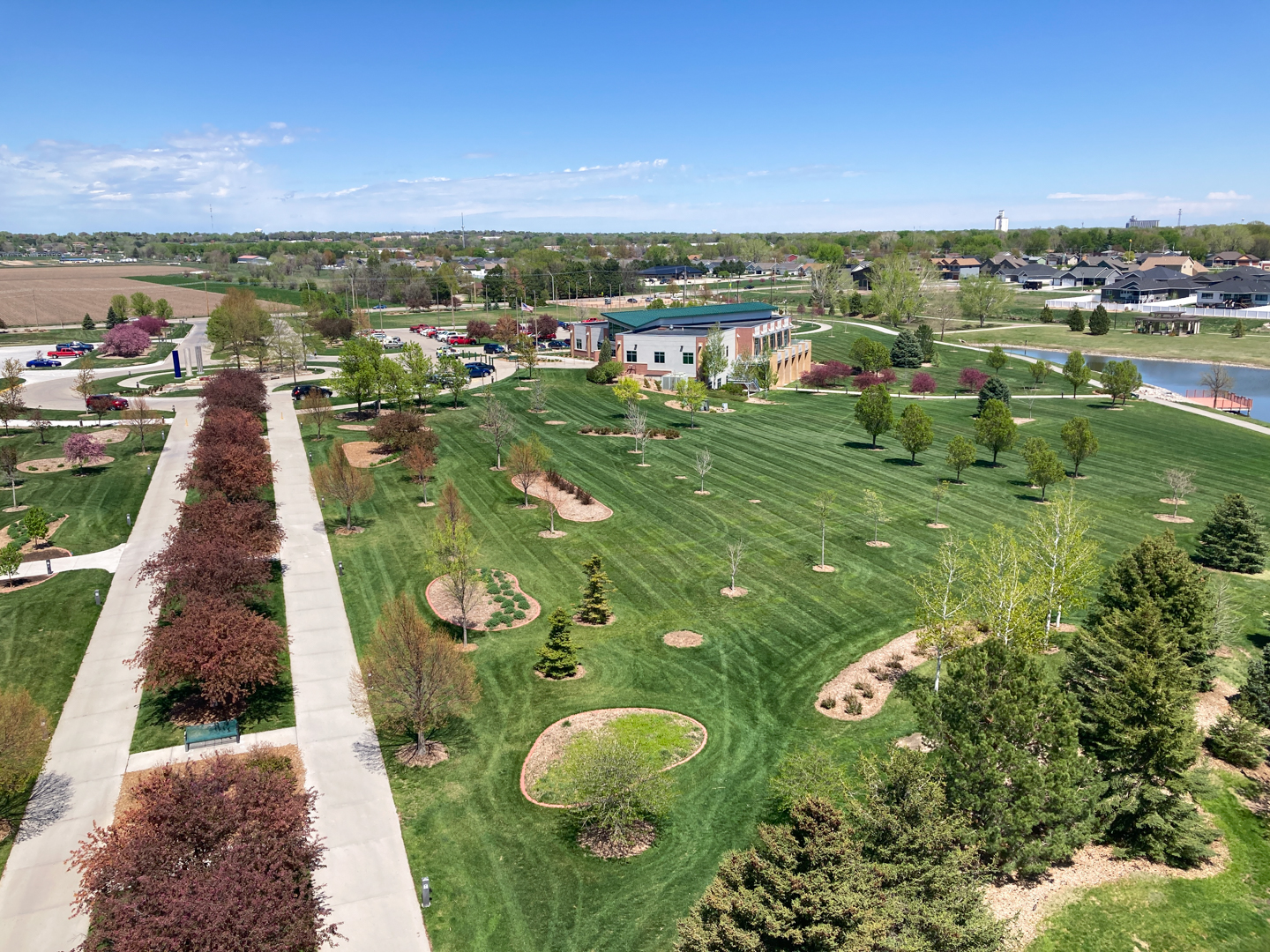
Kearney, Nebraska, and Hays, Kansas, have a lot in common.
Only a two-and-a-half-hour drive separates the cities, and both are situated along major freeways (I-80 and I-70, respectively). They are both home to universities (the University of Nebraska at Kearney and Fort Hays State University). They are both considered micropolitan communities. And they both recently participated in the First Impressions program, a university-run collaborative outreach effort between two coordinating cities.
Shawn Kaskie, an Extension educator with Rural Prosperity Nebraska, helped coordinate the interaction, which was overseen by Kansas State University’s Research and Extension office. While this isn’t the first First Impressions experience for a Nebraska town, it is the first to cross state borders.
“It’s not about comparing one community to the other,” said Kaskie, who worked with Jan Steen, the community vitality specialist from Kansas State. “The program’s about cooperation — discussing and sharing feedback to capitalize on what you’re doing well and strengthen the areas that could use some improvement. It’s a collaborative effort to raise everybody up together.”
The First Impressions program (dubbed “Peer to Peer” at Rural Prosperity Nebraska) matches two cities of similar size, demographics and urban/rural setting. Teams from each city visit the other unannounced, taking pictures of and exploring the housing market, business and shopping districts, child care opportunities, tourist attractions, schools and more. The teams then compile a report based on their experiences and share their findings with each other, discussing community attributes that are working well, as well as opportunities for growth.
The visiting teams generally embody a breadth of experience, Steen said.
“We try to get some different perspectives so it’s not just everybody looking at the economic side of things or the housing side of things,” she said.
That diversity in expertise creates a more holistic view of the participating communities. The team from Kearney that visited Hays included Kaskie, who focused on housing and the downtown shopping district; Kelsey Knehans, development specialist for Buffalo County, who looked into child care and health care; Kearney Mayor Stan Clouse, who reviewed infrastructure and the industrial park; and Kyle Means, director of marketing at UNK, who explored the downtown area and college life of Fort Hays State.
When the Hays action team approached Steen about instigating First Impressions, they specifically requested to be teamed up with Kearney because of their similar rural and college settings. So Steen connected with Kaskie. As an Extension educator, Kaskie saw this as an opportunity to explore community development ideas beyond Nebraska’s borders and witness trends from the wider region.

Knehans joined the team to see what community growth and success looked like in other communities.
“I was interested in getting to explore a new town that is similar to Kearney but see how different they are in their own unique way,” she said.
The teams made their visits last summer. This spring, the teams shared their reports with each other, coordinated through Steen, who Zoomed in with the Kearney Chamber of Commerce board to deliver the results.
“With First Impressions, (these cities) have an opportunity to visit each other and see how another community is addressing issues or see some ideas of things that they’re doing that they might want to bring back home,” Steen said. “One thing I’ve had participants in this say is they’re never going to look at their own community the same.”
A highlight from the Hays team’s report on Kearney was the impressive park and bike trail system, and some mentioned they would return to further explore Yanney Heritage Park. They also focused on the cleanliness and active environment of the downtown area, highlighting the colorful planter boxes, and made special note of how “awesome” K-Town Cakery was. Outside the downtown area, other attributes of Kearney that garnered praise were the solar farm, the abundant health care options, the Younes Conference Center complex and the cleanliness of the school grounds.
Opportunities for improvement included mentions of uneven brick streets, increasing public transportation infrastructure to match the size of the city and making a strategic effort to fill some of the empty buildings downtown.
The First Impressions experience isn’t simply about receiving feedback. Kaskie highlighted amenities he saw in Hays that could aid in community development in Kearney.
“I’m a little biased because my kids play ball, but Hays has a brand new baseball/softball complex, and it’s all turf,” he said. “That’s an economic development tool. They can host ball tournaments in April and May when the weather isn’t good, because even if the fields are wet, they’re turf. So their hotels are full every weekend basically from April to July because they’re hosting ball tournaments. Kearney does have a new ball complex, but it’s not turf, and it’s only for Little League, whereas Hays’ complex can do boys and girls at all age levels, so it’s a little more flexible.”
The report and feedback presentation is not a to-do list, Steen said. The purpose of the program is to gain insight about what outsiders think of a community and use that insight at one’s own pace, and within one’s means, to meet the community’s goals.
“Every community has its own unique approach to community development that works for them but may not work for everyone,” Knehans said. “Knowing that for your community is valuable in itself.”
For the first interstate experience, Kaskie said First Impressions has been valuable.
“Rural Prosperity Nebraska looks forward to continuing these relationships, not only with K-State Extension, but other neighboring states, should the opportunity arise,” he said. “This has been a good arrangement, a good partnership.”
Share
News Release Contact(s)
Related Links
Tags
High Resolution Photos

HIGH RESOLUTION PHOTOS








